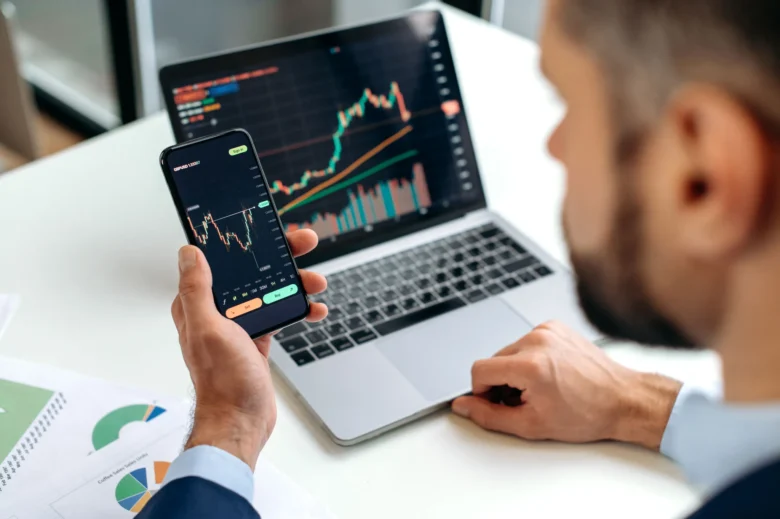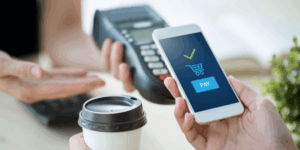Traditional finance remains closed to billions of people worldwide. Remote banking locations, unclear fee structures, and requirements for formal identification or credit history exclude significant segments of the population. Those without or with limited access to banking services hinder economic security, growth, and mobility, perpetuating poverty and inequality. A powerful and silent movement is democratizing finance, one smartphone at a time. Digital finance—mobile money, fintech apps, and blockchain solutions—is the primary driver of financial inclusion in the 21st century. It leverages ubiquitous technology to bypass outdated infrastructure and create a new, more equitable financial model that offers universal, direct, and user-centric access. This revolution offers dignity, opportunity, and resilience to those displaced by traditional systems, going beyond bank accounts.
Mobile Technology Democratizes Access
The global proliferation of mobile phones, even modest ones, in impoverished areas has been the primary driver of financial inclusion. Mobile network operators and agile fintech startups have pioneered mobile money services, allowing users to store, transfer, and receive money without a bank account. Kenya’s M-Pesa transformed SMS infrastructure into a financial instrument, generating revenue for millions of users overnight and setting a global standard. This concept eliminated expensive brick-and-mortar offices and lowered the cost of financial services. The system allowed farmers, market vendors, and domestic workers to receive payments instantly and securely, pay school fees, and pay utility bills in their own villages. Their phones became bank branches, payment terminals, and ATMs, democratizing access to services unavailable in brick-and-mortar institutions.
Reducing Costs and Removing Economic Barriers
Traditional banks are expensive to maintain, forcing users to pay high account maintenance fees, minimum balance requirements, and transaction fees. These fees are prohibitive for low-income and unstable individuals, making formal banking uneconomical. Digital finance has further improved this model. Digital wallets and new banks function at a significantly lower cost compared to physical banks, which necessitate substantial real estate and staff. This model enables accounts with low or even no fees, small transactions, and highly transparent pricing. Digital finance removes these economic barriers, enabling people to save small amounts daily for just pennies, obtain microloans to start a small business, or purchase nano-insurance for their crops.
Digital Identity and Credit History
The lack of credit history or identification makes it difficult for unbanked individuals to open a traditional bank account and obtain risk assessments. Digital finance innovatively uses alternative data to build financial identities. The rich transaction history of mobile wallets—regular deposits, money flows, and consistent bill payments—can reflect financial behavior and trustworthiness. Fintech companies are using artificial intelligence and intelligent algorithms to analyze non-traditional data and create strong digital financial identities. We can use this identity to algorithmically assess the creditworthiness of small, targeted loans, enabling access to formal credit without the need for a credit score. This fundamental shift transforms everyday financial behavior into tangible assets that can be used to build verifiable economic profiles and access life-changing financial products.
Securing Cash and Reducing the Risks of Physical Money
The cash economy is fundamentally unstable. Money can be stolen, lost, exposed to natural disasters, or simply misplaced. A single robbery, fire, or flood can wipe out the savings of a precarious life, pushing entrepreneurs, small businesses, and cash-based day laborers into poverty. Digital finance offers security and resilience. Mobile wallets and digital accounts use encryption, PINs, and increasingly popular biometric authentication methods like fingerprints or facial recognition to protect money. This digital security is more effective than hiding savings at home. We avoid conflicts and build trust in financial transactions by providing a verifiable, irrefutable electronic record of all transactions. Private digital accounts offer financial autonomy and security to women, who may lack access to household resources or a safe place to store cash.
Supporting Effective Government and Humanitarian Aid
Digital finance is an efficient, transparent, and secure way to make government-to-person (G2P) payments, such as social benefits, agricultural subsidies, and humanitarian aid. Governments can transfer funds directly to residents’ authenticated digital wallets, eliminating the need to provide cash or use complex and vulnerable check systems prone to embezzlement, delays, and corruption. This ensures that critical aid reaches its intended recipients promptly and intact, saving administrative costs and preventing fraud. During the COVID-19 pandemic, countries like Togo leveraged mobile payment platforms to quickly and securely deliver emergency aid to millions of vulnerable citizens, demonstrating how a strong digital financial infrastructure enables social protection and crisis response.
Conclusion
Digital finance has had a significant impact on financial inclusion and paved the way for a more equal economy. It transforms financial exclusion based on physical and economic barriers into financial empowerment based on connectivity, innovation, and user-centered design. This socioeconomic transformation promotes not only technological advancements but also resilience, entrepreneurship, gender equality, and stronger communities. Digital literacy, internet accessibility, and strong consumer protection systems remain pressing challenges, but the direction is clear. Digital banking is essential for building an inclusive global economy where everyone, regardless of location or income, can secure their future, protect their assets, and participate with dignity in the digital economy.
FAQs
1. What are the key differences between people without a bank account and those with limited access to banking services?
People without a bank account do not have access to savings accounts, credit, or insurance from regulated institutions. While they may have basic bank accounts, the lack of affordable credit leads people with limited access to banking services to use predatory financial services, such as payday loans, pawnshops, and document cashing services, to manage their cash flow and meet their financial needs.
2. How can digital finance promote women’s financial inclusion?
Digital finance provides women with private, secure, and personally managed accounts that they can access discreetly, without needing family permission. It allows women to save and build assets without social pressure, receive direct wages and government subsidies, and have a financial identity, giving them unparalleled economic autonomy and empowerment within their families and communities.
3. Digital financial services for low-income users: are they safe?
Reliable digital financial services use encryption, PIN protection, and biometrics to offer greater security than cash. Users must learn to protect their PINs and recognize scams. To protect user funds and data, regulators are also developing consumer protection regulations for digital banks.
4. How can governments promote digital financial inclusion?
Governments play a key role. They can promote inclusion by digitizing their payment methods (e.g., for social benefits, pensions, and wages), creating regulatory sandboxes for fintech innovation, investing in public digital infrastructure such as national ID systems, and encouraging competition and interoperability among financial service providers.



